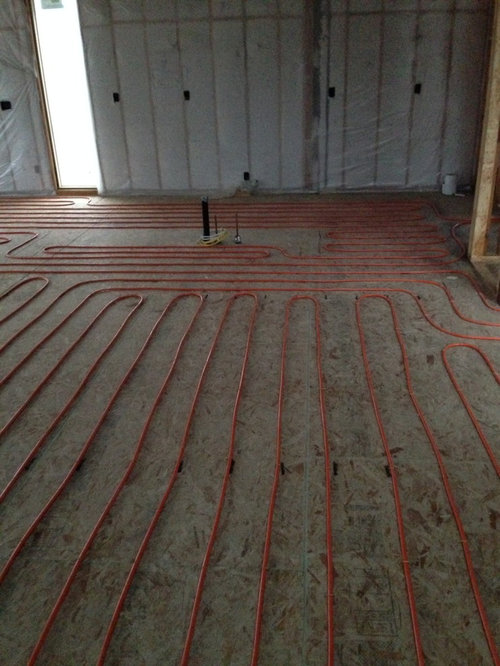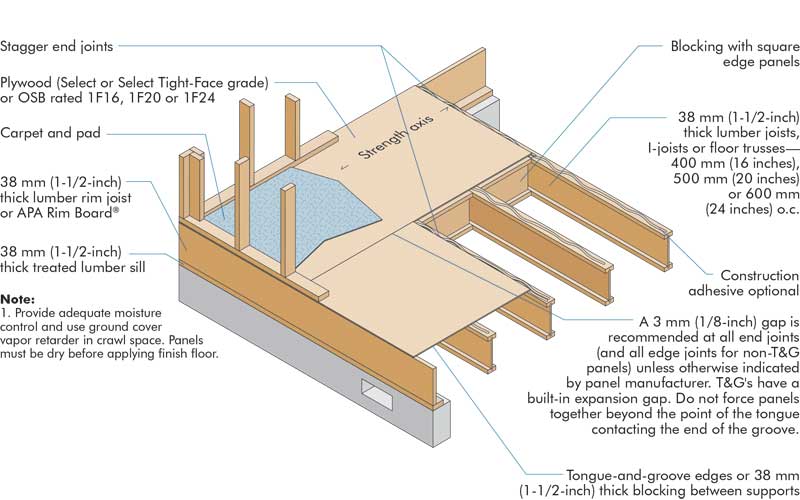Apply adhesive on two sides of the block and position it along the side of the joist under the loose squeaky area so that it is in contact with the joist and the floor.
Seams on top of joist plywood on floor.
Decking screws spaced 6 inches apart on the seams and 8 inches apart on the face of the plywood hold the panel in place.
Laying your first piece in the outside corner of the floor you want the long dimension of the plywood to lay across six joists with the final edge ending up in the center of the 6th.
On the four foot edges your seams will fall on joist tops so no need for tongue and groove.
Unsealed seams diminish the effectiveness of the cooling and heating systems of a home which can adversely affect utility costs.
Screw the sheets to the subfloor using rust resistant screws and spacing them 6 inches apart.
When the sheets are secure spread thinset mortar on the seams cover it with fiberglass cementboard joint tape and trowel another layer of thinset on top of the tape as if you were taping drywall seams.
Plywood used as a subfloor wall underlayment or roof sheathing needs to have the seams sealed with caulk.
Floor is still up but is reinforced as strongly as it if was resting on the joist.
The tongue and groove are only along the 8 foot edges.
But to start off we will need to remove the tongue so the plywood is tight with the exterior icf walls.
Screw the block to the joist first.
By sealing these seams moisture insects dust and air can t permeate into a home.
A screw gun is the quickest and most efficient way to insert the decking.









